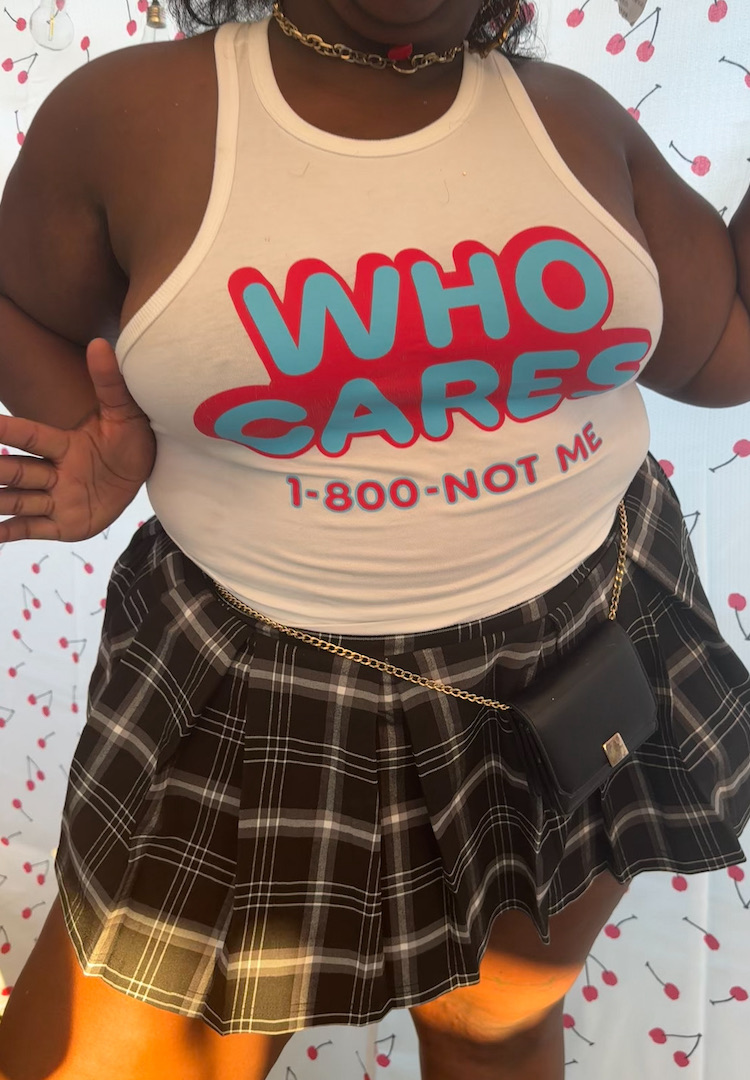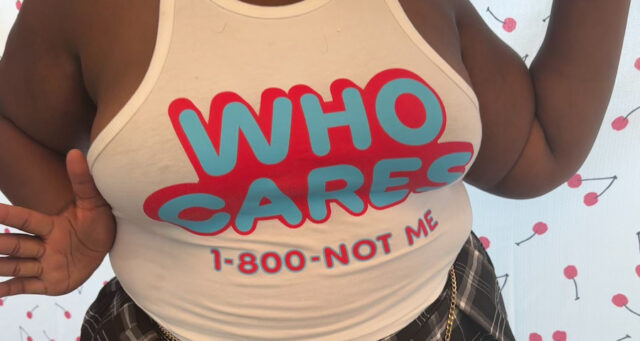
You’re not alone if one of your wardrobe’s prized possessions has recently been hit with the recession indicator allegations. Current suspects include blonde-brown hair, knee-high boots (specifically Chloe’s Dakota style), micro-mini skirts (but also maxi skirts), slick-back buns, and heatless curls. Even new Lady Gaga music and Broadway’s Mamma Mia! revival has been under fire.
Suddenly, your affinity for that certain hairstyle or silhouette is signalling something far more serious than taste – it’s an omen of the impending economic downturn.
For more fashion news, shoots, articles and features, head to our Fashion section.
This idea of ‘recession indicators’ has morphed into a viral phenomenon, with TikTok users, influencers and mainstream outlets scrambling to identify every trend as a sign of looming financial instability. And while the term might just be taking a turn as the latest internet lexicon, the concept of a recession indicator in fashion and culture has been around for more than a century.
In the late 1920s, economist George Taylor would propose the Hemline Index – a widely disputed theory arguing that women’s skirt lengths rise and fall with economic cycles. Despite the lack of empirical evidence, the Hemline Index stuck, spawning an array of copycat predictors like the Lipstick Index (in a recession, women spend more on cosmetics than big-ticket items) and the High Heel Index (when the economy goes down, heels get higher).
These theories, focused on women’s spending, look at how economic anxiety leads to certain spending trends – but each has murky degrees of historical accuracy.
If everything’s a recession indicator, nothing is
There’s no denying that fashion and economic reality have always been linked. Post-war glamour gave us stilettos. The oil crisis of the 1970s popularised polyester. The modern suit emerged from the material shortages of post-WWII England. Fashion always reflects context.
But can fashion accurately predict an economic crisis? Not really. At least not according to a report by The Economist, which argued that trends like the Lipstick Index have “no clear correlation”. Much like today’s crop of recession indicators, which contradict themselves at every turn.
Micro-mini skirts earn the recession indicator title at the same time as maxi skirts. Blonde-brown hair gets named ‘recession hair’, despite its spiritual predecessor (the ombre) rising to prominence in 2014. Bandage dresses are a recession indicator but so are conservative silhouettes. Ed Sheeran has somehow joined the list, even though his first album ‘+’ didn’t get released until three years after the GFC.
Beyond today’s paradoxes, recession indicator discourse has always been laden with contradiction. In 2009, a study reported that while lipstick sales sometimes increase during times of economic distress, they also pick up during periods of prosperity.
Ultimately, our relationship to spending and fashion is ever-evolving, motivated by an array of factors. As journalist Madeline Whitaker explained in 2024, “For many of us, clothing is much more than fabric and thread. It’s our armour, our canvas, our uniform, our costume, or even our passion. There is no possible index that could determine a rhyme or reason to what’s in Vogue.”
Are we observing trends or inventing them?
In today’s hyper-accelerated digital landscape, we are no longer simply reporting fashion shifts, but actively shaping them through the stories we tell online.
Given the lack of historical accuracy, the recent rise of recession indicator discourse looks awfully like trends with a retrofitted narrative, disguised to combat the growing microtrend fatigue and -core exhaustion. Suddenly, these new styles aren’t just trends at work but a predestined economic impulse. Calling them recession indicators lets us participate in a new shared joke to make the chaos around us legible.
It also pushes certain spending narratives upon us. The relentless trend cycle gains a sense of inevitability – and more importantly, a sense of authority. Consumption takes on the air of historical necessity, with certain styles being positioned as a force of rational, historically-proven relief from the hellish circumstance.
On the other side of the spectrum, the onslaught of memes and social media discourse about recession indicators could turn into a self-fulfilling prophecy – influencing customer behaviours rather than simply just reporting on them. Our obsession with finding recession indicators can precipitate an actual recession by insisting one is already under way.
With that in mind, calling certain pieces ‘recession indicators’ lumps nuanced style choices in with, say, the return of Ed Sheeran – not exactly the aspirational space most fashion fans want to occupy.
Dressing for ourselves – not a downturn
While legacy fashion media has definitely helped fuel the recession indicator discourse, its true epicentre is TikTok. And unsurprisingly so. TikTok provides us with the perfect platform to make sense of the impending situation with data-led predictions and amateur trend forecasting, as well as plenty of tongue-in-cheek observations.
While TikTok is no doubt a major perpetuator of this discourse, I think it provides the antidote as well. Beyond occasionally parroting economic theory, it provides a sprawling network of fashion-minded folk to draw inspiration from. Like the way Melbourne-based creator Marissa Lepps rethinks corporate fashion, or how Talziki styles thrifted teal blue cowboy boots for the office, or how a group of friends in Wellington dress before heading to a Vivienne Westwood exhibition. TikTok lets us bear witness to personal style at its most expressive and most importantly, authentic.
Unlike in recessions past, where fashion discourse was set by big publications and bigger brands, we now have the chance to connect with endless style personalities and discover inspiration far and wide to develop our own. It’s all lurking on the outskirts of the micro-trend-obsessed algorithm.
Platforms like TikTok give us the chance to buck against the spending narratives that have historically been set and let fashion, in all its iterations, remain the source of respite we so desperately deserve. The glorious diversity of creators is a reminder that fashion is a feeling not a forecast. We don’t owe the market a meaning.
For more on recession indicators in fashion, try this.
This article The problem with fashion’s ‘recession indicators’ appeared first on Fashion Journal.
2025-05-08 07:56:00
#problem #fashions #recession #indicators
Source link
















